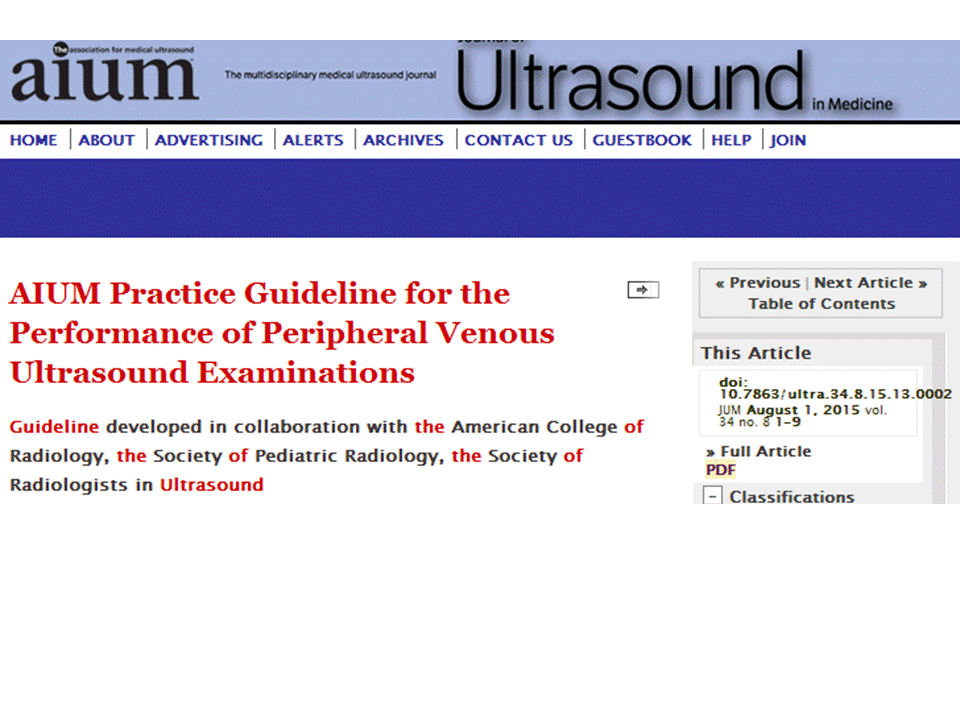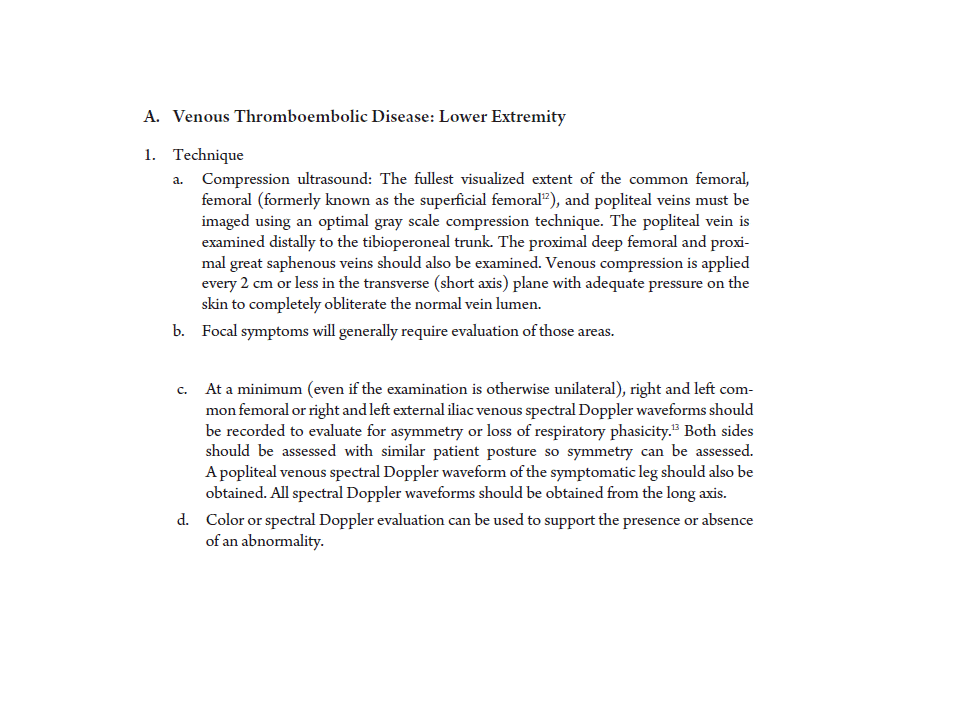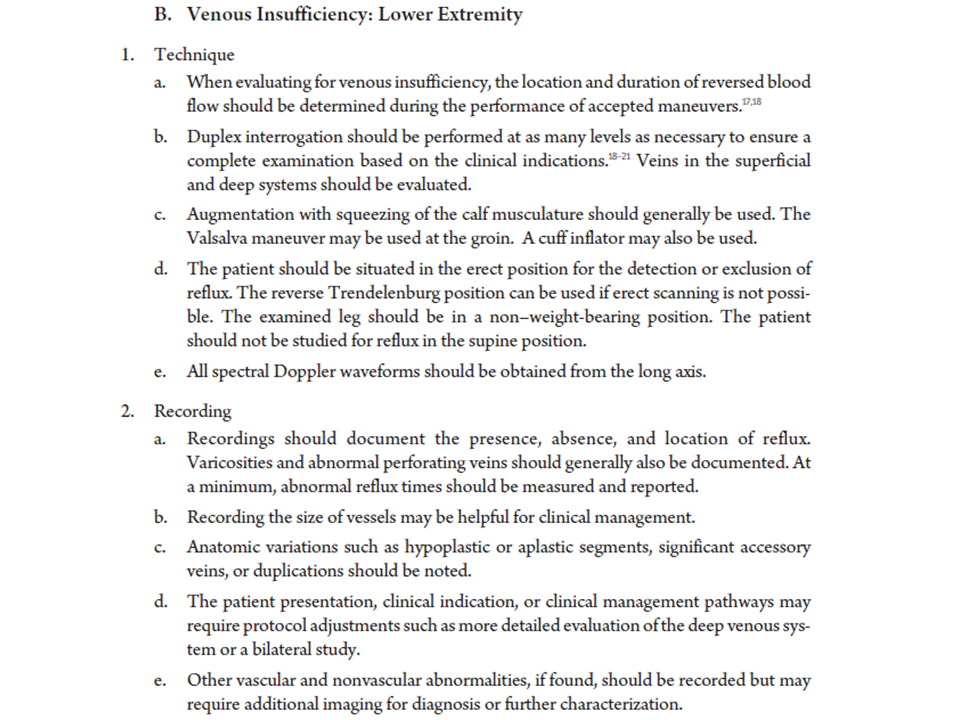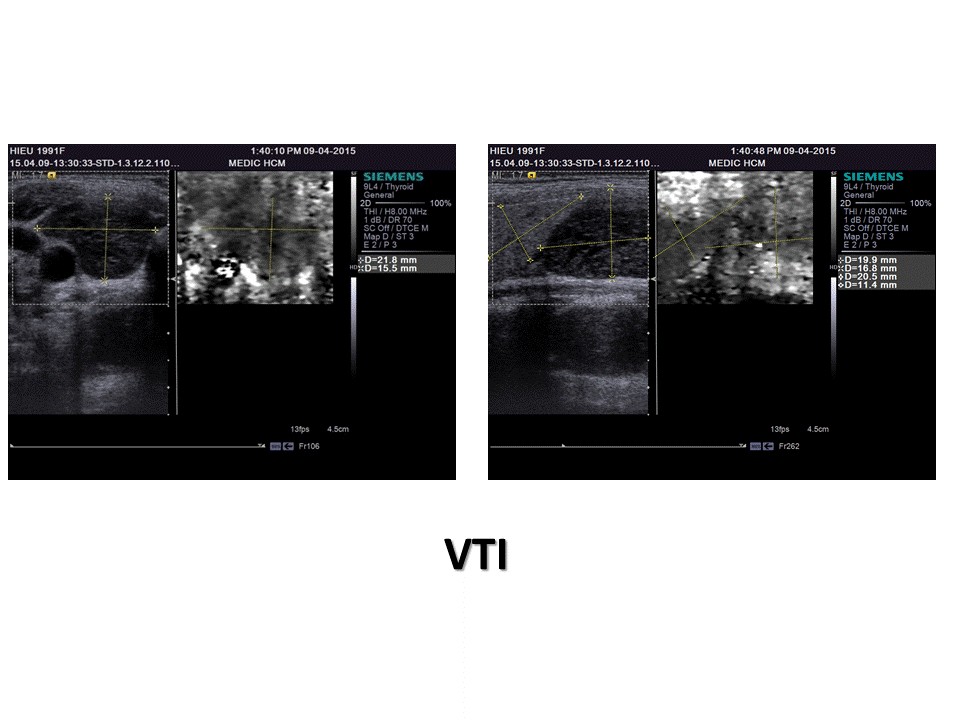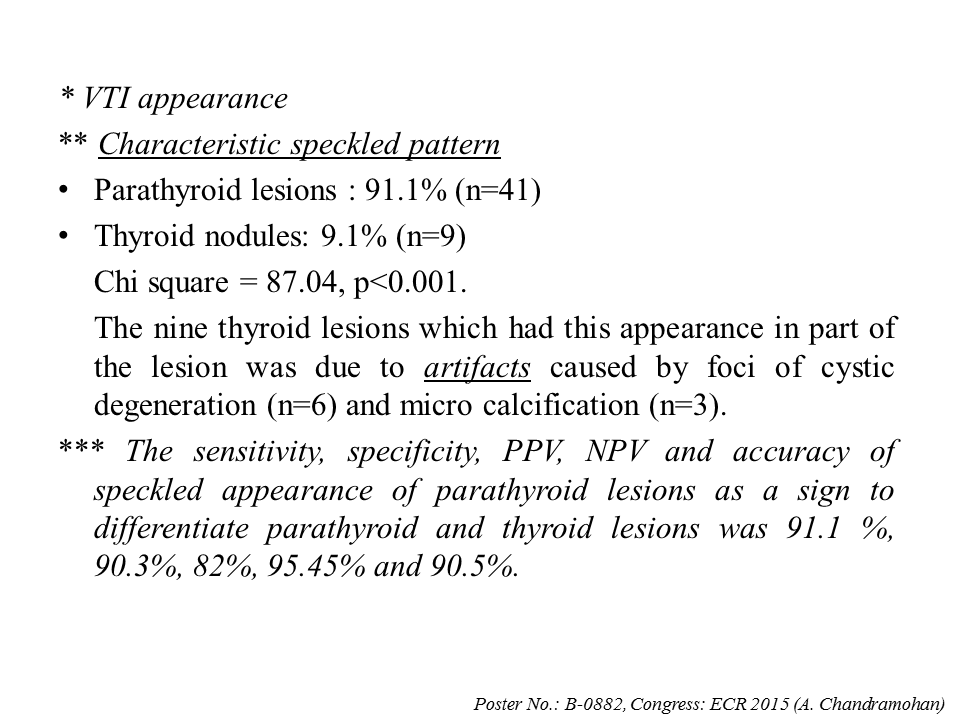Tổng số lượt xem trang
Thứ Sáu, 21 tháng 8, 2015
Thứ Bảy, 8 tháng 8, 2015
Thứ Tư, 15 tháng 7, 2015
Ultrasound of Kidney Length Predicts CKD
Kidney Int. 2015 Jul;88(1):146-51. doi: 10.1038/ki.2015.71. Epub 2015 Apr 1.
A comparison of ultrasound and magnetic resonance imaging shows that kidney length predicts chronic kidney disease in autosomal dominant polycystic kidney disease.
Bhutani H1, Smith V1, Rahbari-Oskoui F1, Mittal A1, Grantham JJ2, Torres VE3, Mrug M4, Bae KT5, Wu Z5, Ge Y5, Landslittel D5,Gibbs P5, O'Neill WC1, Chapman AB1.
Abstract
Thứ Tư, 8 tháng 7, 2015
ROTATOR-CUFF TENDON REPAIRED
Discussion
Although recurrent rotator cuff tears are not uncommon, and
imaging evaluation of a postoperative rotator cuff plays a critical role, as
noted in the introduction, the temporal changes in the postoperative tendon on
sonography have not been well investigated. This study aimed to address the
uncertainties regarding the postoperative rotator cuff on serial follow-up
sonographic examinations. In our study, serial sonographic evaluations of the
repaired rotator cuff revealed mild thinning of the tendon over time. Recurrent
tears of the repaired tendon were not frequent (4 of 65 [6%]), but if they
happened, they always occurred within the first 3 months of surgical repair,
which was concordant with results from a previous study.5 The morphologic appearance
and peritendinous vascularity of the tendon were gradually normalized, although
mild bursal thickening remained 6 months after surgery. Crim et al19 described
the temporal evolution of MRI findings after arthroscopic rotator cuff repair,
with serial MRI examinations at 6 weeks, 3 months, and 12 months after surgery.
The tendons were the most disorganized compared to the native tendons 3 months
after surgery, and they generally improved between 3 and 12 months after
surgery. Fealy et al14 also reported that it was not uncommon to detect a
full-thickness defect on sonography in the early postoperative period; however,
they hypothesized that this defect was a reparative scar rather than a true
retear because it gradually improved over time. Previous histologic studies
supported these results. Four to 6 weeks after surgery, there was disorganized
collagen at the bonetendon interface as well as an irregular zone of edema
between the collagen bundles with neovascularization immediately proximal to
the bone-tendon interface.20,21 The interface tissue became progressively more
organized with time, and the tendon fibroblasts were increasingly oriented
along the tendon.21 Similarly, in this study, there was also a disorganized
appearance, including a decreased echo texture, absence of a fibrillar pattern,
and surface irregularity, in the repaired tendon at 5 weeks and 3 months;
however, this disorganization normalized through remodeling by 6 months after
surgery. Early postoperative tendons frequently had a hypo - echoic echo
texture and the absence of a fibrillar pattern, which might be misinterpreted
as recurrent tears; however, these features often normalized into tendons with
an increased echo texture and the reappearance of a fibrillar pattern at 6
months (Figure 7). Based on these sequential findings, the sonographic findings
within 3 months after surgery should be interpreted with caution to accurately
understand and monitor the repaired tendon status. The defect described by
Fealy et al14 might be similar to the finding mentioned above, although it
could not be confirmed because the authors did not provide an image
illustrating the defect in their article. In terms of the tendon thickness,
Tham et al15 demonstrated that the repaired supraspinatus tendon thickness
remained unchanged throughout 6 months of sonographic analysis, whereas
Lasbleiz et al9 reported an inverse correlation between the tendon thickness
and the time between measurements. In our study, the tendon thickness decreased
over time after surgery, resulting in a 5% to 10% difference in the thickness.
Some patients had marked changes exceeding 30% to 50% of the tendon thickness 5
weeks after surgery (Figure 6). After careful review of the arthroscopic
findings and intense discussion with the surgeon, this change was thought to be
a postoperative deformity, a “dog ear” deformity, at the repaired tendon with
spontaneous remodeling over time.22 Subacromial-subdeltoid bursitis decreased
significantly over time; however, mild bursal thickening was frequently
observed at 6 months. This finding was consistent with a study performed by
Tham et al,15 which demonstrated a significant decrease in the bursal
thickness, capsular thickness, shoulder stiffness, and level of pain over time.
Another interesting issue in the healing of a rotator cuff is the vascularity
of the rotator cuff after surgical repair because blood at the site of a
repaired tendon encourages the reestablishment of the bone-tendon
attachment.13,14 Several studies have shown the vascular pattern in the
repaired tendon on Doppler studies with or without a contrast agent.13–17These
studies reported initial high vascular flow at the peritendinous region that
decreased with time, whereas the repaired tendon showed either sparse or no
blood flow. However, it was uncertain whether the vascularity at the bone
anchor site was increased. The bone anchor site had the lowest blood flow on
conventional Doppler studies,14whereas marked enhancement in the suture anchor
and the peribursal regions were observed on contrast-enhanced
sonography.13,16,17 The authors explained that the discrepancy between the
findings from the contrast-enhanced and conventional Doppler studies could be
attributed to the increased sensitivity of microbubble contrast techniques. In
our study, the peritendinous region had the greatest blood flow, which
decreased on follow-up sonography, and the bone anchor site and tendon remained
relatively avascular. This result was consistent with studies performed using
conventional Doppler analysis without microbubble contrast. On the basis of the
finding of the most robust, highest vascularity in the peribursal tissue, some
authors have suggested that the peribursal tissue might be the greatest conduit
of blood flow for promoting healing of the repaired tendon.13,14,17 However, no
data have shown the relationship between the peribursal vascularity and the
retear rate or clinical outcomes, and further investigation is warranted. Our
study had several limitations. First, subjective criteria were used to assess
the morphologic tendon characteristics. Although efforts were made to use
reproducible criteria, it was difficult to apply consistent and reproducible
criteria between patients and examinations because of the operator-dependent
nature of sonography. Second, it was at times difficult to assess the repaired
tendon in the early postoperative period in patients with severe pain and a
limited range of motion. Third, the follow-up was rather short, and further
investigations of the long-term outcomes or prognoses 1 and 2 years after
surgery are needed. Nevertheless, sonographic assessment of the repaired tendon
3 months after surgical repair might be important because the clinical
examination at this time might be limited by immobility and pain, and most
recurrent tears occur within the first 3 months of surgical repair. Fourth, the
sizes of the rotator cuff tears were not uniform in our study. Fifth, there was
no surgical proof of retears. Finally, clinical findings, including stiffness
and the level of pain, were not assessed in our study. Further study is
warranted to determine whether the sonographic appearance of a healing tendon
correlates with the level of pain. In conclusion, we have demonstrated that the
occurrence of a retear developed within 3 months after surgery, and the tendon
thickness and morphologic appearance of the repaired tendon improved over time
and nearly normalized within 6 months after repair. In our study, the
sonographic findings in the first 3 months after surgical repair should be
interpreted with caution to accurately understand and monitor the repaired
tendon status.
Thứ Sáu, 3 tháng 7, 2015
ONSD and RAISED INTRACRANIAL PRESSURE
Objectives—The diagnosis of raised intracranial pressure (ICP) is important in many critically ill patients. The optic nerve sheath is contiguous with the subarachnoid space; thus, an increase in ICP results in a corresponding increase in the optic nerve sheath diameter. The objective of this study was to assess the diagnostic accuracy of sonography of the optic nerve sheath diameter compared to computed tomography (CT) for predicting raised ICP.
Methods—We searched PubMed, EMBASE, and the Cochrane database from 1986 to August 2013 and performed hand searches. Two independent reviewers extracted data. Study quality was assessed by using the Quality Assessment of Diagnostic Accuracy Studies (QUADAS) tool. We calculated κ agreement for study selection and evaluated clinical and quality homogeneity before the meta-analysis.
Results—From 1214 studies, we selected 45 for full review. Twelve studies with 478 participants were included (κ = 0.89). Ocular sonography yielded sensitivity of 95.6% (95% confidence interval [CI], 87.7%–98.5%), specificity of 92.3% (95% CI, 77.9%–98.4%), a positive likelihood ratio of 12.5 (95% CI, 4.16–37.5), and a negative likelihood ratio of 0.05 (95% CI, 0.02–0.14). Average quality according to the QUADAS tool was 7.4 of 11. There was moderate to high heterogeneity based on the prediction ellipse area and variance logit of sensitivity (2.1754) and specificity (2.6720).
Conclusions—Ocular sonography shows good diagnostic test accuracy for detecting raised ICP compared to CT: specifically, high sensitivity for ruling out raised ICP in a low-risk group and high specificity for ruling in raised ICP in a high-risk group. This noninvasive point-of-care method could lead to rapid interventions for raised ICP, assist centers without CT, and monitor patients during transport or as part of a protocol to reduce CT use.
VTI and VTQ on BREAST TUMORS
Objectives—Breast cancer is the second leading cause of death from cancer in women, and early detection is the key to successful treatment. Unfortunately, even with technological advances, the specificity of imaging modalities is still low. Therefore, we evaluated the value of a newly developed noninvasive technique, acoustic radiation force impulse imaging, for differentiating benign versus malignant breast lesions.
Methods—We prospectively examined 141 breast lesions in 122 patients. All lesions were classified according to the American College of Radiology Breast Imaging Reporting and Data System (BI-RADS) for mammography, BI-RADS for sonography, and Virtual Touch tissue imaging (VTI; Siemens Medical Solutions, Mountain View, CA) pattern. Internal and marginal shear wave velocity (SWV) values for the lesions were noted. The sensitivity, specificity, accuracy, and positive and negative predictive values for VTI and Virtual Touch tissue quantification (VTQ; Siemens Medical Solutions) were calculated.
Results—The marginal SWV values were statistically higher in malignant lesions (mean ± SD, 5.41 ± 1.37 m/s) than benign lesions (2.91 ± 0.88 m/s; P under .001). When the SWV cutoff level was set at 4.07 m/s, and the higher of the internal and marginal values was adopted, the combination of VTI and VTQ showed 95.1% sensitivity, 99.0% specificity, and 97.8% accuracy.
Conclusions—Breast Imaging Reporting and Data System category 4 lesions are the main focus of research for early detection of breast cancer. Unfortunately, BI-RADS category 4 assessment covers a wide range of likelihood of malignancy (2%–95%). This wide range reflects the necessity for a more specific imaging modality. The combination of VTI and VTQ could increase the diagnostic performance of conventional sonography.
Thứ Tư, 24 tháng 6, 2015
Thứ Ba, 23 tháng 6, 2015
SIÊU ÂM ĐÀN HỒI ARFI SIEMENS tại TRUNG TÂM Y KHOA MEDIC HÒA HẢO
Nhận thư mời tham dự CME về Siêu âm đàn hồi ARFI ngày 04-7 tąi Trung tâm MEDIC Hòa Hảo, số 254, Hòa Hảo, Q 10:
Phòng Siêu âm Lầu 1 Khu A.
Hạn trước 1-7-2015
Xác nhận tham dự với
Ms Ngô thị Tâm (Siemens) : Mob: 01669262002
Đã tổ chức thành công với 162 bác sĩ siêu âm từ Huế, Nha trang đến Cà mau và các tỉnh phía nam và thành phố HCM tham dự.
Bs Nguyễn Thiện Hùng, Phòng Siêu âm Medic: Mob: 0918188372
email : medichh@yahoo.com
Phòng Siêu âm Lầu 1 Khu A.
Hạn trước 1-7-2015
Xác nhận tham dự với
Ms Ngô thị Tâm (Siemens) : Mob: 01669262002
Đã tổ chức thành công với 162 bác sĩ siêu âm từ Huế, Nha trang đến Cà mau và các tỉnh phía nam và thành phố HCM tham dự.
Bs Nguyễn Thiện Hùng, Phòng Siêu âm Medic: Mob: 0918188372
email : medichh@yahoo.com
Thứ Bảy, 20 tháng 6, 2015
Dedicated Training Program for Shoulder Sonography
Sonography is a commonly used diagnostic imaging modality for evaluation of rotator cuff tears, in part
because this modality has lower cost and accuracy comparable to that of magnetic
resonance imaging (MRI).1–7 In the United States, the use of musculoskeletal
sonography increased by 316% between 2000 and 2009; this increase was driven
primarily by nonradiologists8 and continued the utilization growth trend of the
previous decade.9
However, in the United States, unlike in Europe and Asia, sonography is not
considered a first-line imaging modality for shoulder pain.7,10 In addition,
the usefulness of shoulder sonography is widely considered to be operator
dependent, with the radiologist’s experience being the primary factor in this
imaging modality’s effectiveness.11–13
Several studies have found little agreement in sonographic results between less- and more-experienced operators, even when the operators were evaluating full-thickness tears.13,14 Other studies have found good to excellent reliability of sonography for the diagnosis of full-thickness rotator cuff tears but less satisfactory detection sensitivity for partialthickness tears.1,4,11,14 In a meta-analysis of 65 studies, de Jesus et al2 found no differences between MRI and sonography in sensitivity or specificity for detection of full or partial rotator cuff tears.
Given these variable results, many non-European radiologists may believe that musculoskeletal sonography is a difficult technique to learn and implement and may thusexclude it from clinical practice in patients with shoulder pain. However, with the current economic climate, we wished to challenge both this hypothesis and the current dependency on MRI for the diagnosis of shoulder disorders. In this study, we assessed the effect of implementing an open-ended, comprehensive training program on the diagnostic accuracy of shoulder sonographic interpretation in a clinical practice.
Several studies have found little agreement in sonographic results between less- and more-experienced operators, even when the operators were evaluating full-thickness tears.13,14 Other studies have found good to excellent reliability of sonography for the diagnosis of full-thickness rotator cuff tears but less satisfactory detection sensitivity for partialthickness tears.1,4,11,14 In a meta-analysis of 65 studies, de Jesus et al2 found no differences between MRI and sonography in sensitivity or specificity for detection of full or partial rotator cuff tears.
Given these variable results, many non-European radiologists may believe that musculoskeletal sonography is a difficult technique to learn and implement and may thusexclude it from clinical practice in patients with shoulder pain. However, with the current economic climate, we wished to challenge both this hypothesis and the current dependency on MRI for the diagnosis of shoulder disorders. In this study, we assessed the effect of implementing an open-ended, comprehensive training program on the diagnostic accuracy of shoulder sonographic interpretation in a clinical practice.
Discussion
Shoulder sonography is becoming increasingly popular for the diagnosis of rotator cuff tears due in part to its lower cost, accessibility, and results that are similar to those obtained with MRI.1–4 However, sonography is not the first-line imaging test for shoulder pain in the United States, likely because operator experience is thought to contribute to variable diagnostic accuracy and reproducibility.2,11–14,16,17 This lack of preference for shoulder sonography is the case despite the American College of Radiology appropriateness criteria rating of sonography as 8 or 9 (usually appropriate) for patients older than 35 years with shoulder pain and suspected rotator cuff tears/impingement.16 In addition, the American College of Radiology appropriateness criteria rate sonography as 5 (maybe appropriate) should MRI (9, usually appropriate) be contraindicated for patients with ersistent pain.
In contrast, the American College of Radiology appropriateness score for sonography increases to 8 of 9 (usually appropriate) for evaluation of the postoperative cuff or in patients older than 35 years with suspected impingement.
In one study, the interobserver concordance for the diagnosis of full- and partial-thickness rotator cuff tears on independent examinations was found to be high (92%) between 2 operators with more than 5 years of shoulder sonography experience.16 Another study found that agreement between an experienced musculoskeletal radiologist and a general radiologist with no experience in shoulder sonography was 98% for full-thickness rotator cuff tears and 90% for partial-thickness tears.11 These studies demonstrated good inter-rater measurement reproducibility; however, in the second study, the sensitivity, specificity, and accuracy for the detection of full-thickness rotator cuff tears relative to surgery as a reference standard were 3% to 4% lower for the general radiologist than for the experienced musculoskeletal radiologist.11 Another study evaluated the learning curves for 2 orthopedic surgeons using office-based sonographic examinations to detect full-thickness supraspinatus tears previously diagnosed with MRI.12 In this study, at least 100 shoulder sonographic examinations were required to enable each surgeon to detect full-thickness tears, with diagnostic accuracy of 67 of 72 (93%) and 92 of 95 (97%), respectively, in the second round of 100 examinations. The variability in reported operator accuracy for rotator cuff disorders other than for full-thickness tears2,11–14,16,17 may have led to a lack of confidence in sonographically based diagnoses. Nevertheless, agreement and accuracy for the diagnosis of full-thickness tears are high.1,2,11,13,14
....
Shoulder sonography is becoming increasingly popular for the diagnosis of rotator cuff tears due in part to its lower cost, accessibility, and results that are similar to those obtained with MRI.1–4 However, sonography is not the first-line imaging test for shoulder pain in the United States, likely because operator experience is thought to contribute to variable diagnostic accuracy and reproducibility.2,11–14,16,17 This lack of preference for shoulder sonography is the case despite the American College of Radiology appropriateness criteria rating of sonography as 8 or 9 (usually appropriate) for patients older than 35 years with shoulder pain and suspected rotator cuff tears/impingement.16 In addition, the American College of Radiology appropriateness criteria rate sonography as 5 (maybe appropriate) should MRI (9, usually appropriate) be contraindicated for patients with ersistent pain.
In contrast, the American College of Radiology appropriateness score for sonography increases to 8 of 9 (usually appropriate) for evaluation of the postoperative cuff or in patients older than 35 years with suspected impingement.
In one study, the interobserver concordance for the diagnosis of full- and partial-thickness rotator cuff tears on independent examinations was found to be high (92%) between 2 operators with more than 5 years of shoulder sonography experience.16 Another study found that agreement between an experienced musculoskeletal radiologist and a general radiologist with no experience in shoulder sonography was 98% for full-thickness rotator cuff tears and 90% for partial-thickness tears.11 These studies demonstrated good inter-rater measurement reproducibility; however, in the second study, the sensitivity, specificity, and accuracy for the detection of full-thickness rotator cuff tears relative to surgery as a reference standard were 3% to 4% lower for the general radiologist than for the experienced musculoskeletal radiologist.11 Another study evaluated the learning curves for 2 orthopedic surgeons using office-based sonographic examinations to detect full-thickness supraspinatus tears previously diagnosed with MRI.12 In this study, at least 100 shoulder sonographic examinations were required to enable each surgeon to detect full-thickness tears, with diagnostic accuracy of 67 of 72 (93%) and 92 of 95 (97%), respectively, in the second round of 100 examinations. The variability in reported operator accuracy for rotator cuff disorders other than for full-thickness tears2,11–14,16,17 may have led to a lack of confidence in sonographically based diagnoses. Nevertheless, agreement and accuracy for the diagnosis of full-thickness tears are high.1,2,11,13,14
....
Because the study was retrospective,
varying standards of patient care may have been used, as well as
nonstandardized radiology and surgical
report language. Standardization of this report nomenclature with prospectively
defined terminology would decrease reporting variability and aid in the comparison
of results. In addition, the range of musculoskeletal sonography experience may
have increased the variability of the study results. We did not separate out the
examinations interpreted by the most experienced sonographer because we believe
that the benefits of acquisition and interpretation standardization as well as
feedback based on surgical correlation also improved the accuracy of this radiologist’s
sonographic work. Finally, because of the retrospective nature of this study,
the patient population was inhomogeneous with regard to referral patterns,
symptoms, and the distribution of tendon tears across groups.
The results of this retrospective study demonstrate that introducing musculoskeletal sonography into a new clinical practice is not only feasible but can be accomplished with high diagnostic accuracy. The use of musculoskeletal sonography may enable a decrease in health care costs by substitution of a diagnostic musculoskeletal sonographic examination for a shoulder MRI examination.7 The use of sonography as a first-line diagnostic imaging modality for shoulder pain is warranted, as evidenced by the European guidelines.10
Furthermore, based on the findings of this study, we believe that the implementation of a systematic quality improvement program, including acquisition protocol standardization and a comprehensive, ongoing educational program for all team members, can improve the diagnostic performance of all aspects of musculoskeletal sonography, not only sonography limited to rotator cuff injuries.
Although operator experience cannot be ruled out as a factor in sonographic interpretation, this study demonstrates that education provided to a group of operators with a wide variety of experience increases the diagnostic sensitivity and accuracy of sonography for detecting full-thickness supraspinatus and infraspinatus tendon tears.
In conclusion, implementation of formal, ongoing training that embraces all team members, standardizes acquisition and interpretation protocols, and provides a forum for continuous quality improvement raises the diagnostic accuracy and sensitivity of shoulder sonography for rotator cuff injuries. Our work supports the potential of musculoskeletal sonography as a first-line imaging modality for shoulder pain when rotator cuff disorders are suspected.7,10 By implementing an open-ended training program for the entire care team, musculoskeletal sonography can be easily and successfully introduced into a new clinical practice with high diagnostic accuracy.
The results of this retrospective study demonstrate that introducing musculoskeletal sonography into a new clinical practice is not only feasible but can be accomplished with high diagnostic accuracy. The use of musculoskeletal sonography may enable a decrease in health care costs by substitution of a diagnostic musculoskeletal sonographic examination for a shoulder MRI examination.7 The use of sonography as a first-line diagnostic imaging modality for shoulder pain is warranted, as evidenced by the European guidelines.10
Furthermore, based on the findings of this study, we believe that the implementation of a systematic quality improvement program, including acquisition protocol standardization and a comprehensive, ongoing educational program for all team members, can improve the diagnostic performance of all aspects of musculoskeletal sonography, not only sonography limited to rotator cuff injuries.
Although operator experience cannot be ruled out as a factor in sonographic interpretation, this study demonstrates that education provided to a group of operators with a wide variety of experience increases the diagnostic sensitivity and accuracy of sonography for detecting full-thickness supraspinatus and infraspinatus tendon tears.
In conclusion, implementation of formal, ongoing training that embraces all team members, standardizes acquisition and interpretation protocols, and provides a forum for continuous quality improvement raises the diagnostic accuracy and sensitivity of shoulder sonography for rotator cuff injuries. Our work supports the potential of musculoskeletal sonography as a first-line imaging modality for shoulder pain when rotator cuff disorders are suspected.7,10 By implementing an open-ended training program for the entire care team, musculoskeletal sonography can be easily and successfully introduced into a new clinical practice with high diagnostic accuracy.
Dedicated Training Program for Shoulder
Sonography, Patricia B. Delzell, MD, Alex Boyle, Erika
Schneider, PhD, J Ultrasound Med 2015; 34:1037–1042
Thứ Sáu, 19 tháng 6, 2015
Thứ Năm, 11 tháng 6, 2015
Thứ Tư, 10 tháng 6, 2015
SIÊU ÂM 5D LÀ GÌ ? Dr Jasmine Thanh Xuân. Medic Medical Center
Cty Samsung Korea vừa đưa ra khái niệm siêu âm 5 chiều (SA 5D) trên máy W80A chuyên SA sản phụ khoa. Trước đây, SA 3D, 4D chỉ dừng lại ở khảo sát hình thái ngoài của thai nhi mà không thấy được các cấu trúc bên trong khối này. SA 5D, thêm một chiều nữa là chiều chẩn đoán ( Diagnostic Dimension). Cấu trúc hình khối sẽ được tự động phân tích thành loạt hình thường quy trong SA chẩn đoán thai, tự động đo đạc chỉ bằng một nút bấm trên bàn phím. Các ứng dụng hiện có : 5D tim thai ( 5D fetal heart), 5D hệ TKTW ( 5D CNS), 5D hệ xương dài (5D LB), 5D đo da gáy ( 5D NT) và 5D trong khảo sát nang noãn ( 5D Follicle).
- 5D fetal heart: trình bày cùng lúc 9 mặt cắt cơ bản trong khảo sát tim, trong cùng một chu chuyển tim, cho phép quan sát về hình thể ( morphology) và cử động các lá van ( movement) rất sinh động, tự động đánh dấu các buồng tim, các mạch máu lớn. Đòi hỏi BS siêu âm thai phải biết rõ về bệnh học tim bẩm sinh thai nhi.
- 5D CNS: trình bày cùng lúc 3 mặt cắt cơ bản qua não thai nhi ( mặt cắt qua đồi thị, qua não thất bên và tiểu não- hố sau), hiển thị ngay lập tức 6 thông số thường quy: BPD, OFD, HC, NÃO THẤT BÊN, TIỂU NÃO , HỐ SAU chỉ với một nút bấm trên bàn phím.
- Các ứng dụng đo đạc ít giá trị hơn là đo hệ xương dài ( 5D LB), đo da gáy tự động ( 5D NT).
- Ngoài ứng dụng khảo sát thai, còn một ứng dụng trong khảo sát nang noãn buồng trứng
( 5D Follicle). Phần mềm tự động phát hiện, đo đạc thể tích và kích thước từng nang noãn
( dài x rộng x cao), có thể đo cùng lúc 20 nang noãn và trình bày chi tiết trong report của máy chỉ với một nút bấm trên bàn phím, giúp tiết kiệm thời gian, hữu ích trong IVF.
Thứ Hai, 8 tháng 6, 2015
ONE or more ELASTOGRAPHIC METHODS for LIVER FIBROSIS ASSESSMENT
NOTA:
Ultrasound based-elastographic techniques
are classified in: strain techniques and shear wave elastography techniques.
Three types of elastographic techniques are included in the last category:
Transient Elastography (TE), point Shear Wave Elastography (pSWE) and shear wave elastography
(SWE) imaging (including 2D-SWE and 3D-SWE).
In
the pSWE category two techniques are included: Acoustic Radiation Force Impulse
(ARFI) elastography and ElastPQ which look very similar, but there are some
differences regarding their physical principles.
Regarding ARFI elastography
technique, the ultrasound probe produces an acoustic “push” pulse that
generates shear-waves which propagate into the tissue. Their speed, measured in
meters/second (m/s), is displayed on the screen and reflects the underlying
tissue stiffness (influenced mainly by liver fibrosis), the propagation speed increasing
with tissue stiffness. Using image-based localization and a proprietary
implementation of ARFI technology, shear wave speed may be quantified, in a
precise anatomical region, focused on a region of interest, with a predefined
size, provided by the system.
Very few information are available regarding the physical principles of ElastPQ
technique. According to the data provided by the manufacturer in the application for approval submitted
to the US Food and Drug Administration (FDA), ElastPQ system is relatively
similar with Aixplorer system® (SuperSonic Imagine S.A., Aix-enProvence,
France), which is a 2D-SWE. ElastPQ system generates an electronic voltage
pulse, which is transmitted to the transducer. In the transducer, a piezo
electric array converts the electronic pulse into an ultrasonic pressure wave.
When coupled to the body, the pressure wave transmits through body tissues. The
Doppler functions of the system process the Doppler shift frequencies from the echoes
of moving targets, such as blood, to detect and graphically display the Doppler
shift of these tissues as flow. The Doppler mode creates waves in soft tissues
and estimates the tissue stiffness by determining the speed at which these
shear waves travel.
The usefulness of ARFI elastography for non-invasive assessment of liver fibrosis was demonstrated in the last 2-3 years in international multicenter studies [5] and meta-analyses [6-8], but ElastPQ is a newly developed technique and few data are available.
The usefulness of ARFI elastography for non-invasive assessment of liver fibrosis was demonstrated in the last 2-3 years in international multicenter studies [5] and meta-analyses [6-8], but ElastPQ is a newly developed technique and few data are available.
2D –Shear Wave Elastography (2D-SWE):
The evaluation of liver stiffness [LS ] by 2D–SWE was
performed with an Aixplorer® ultrasound system (SuperSonic Imagine S.A.,
Aix-en-Provence, France), using a SC6-1 convex probe. By this technique a
quantitative elasticity map of the medium was obtained. This map is required to
image the propagation of the shear-wave and to measure its velocity. Because
the shear waves generated into the tissue by the acoustic pulse propagate at a
few meters per second, a frame rate of several kilohertz is needed to image
them. This is not possible using conventional ultrasound scanners (they usually
reach a frame rate of approximately 50 Hz). For this reason, an ultrafast,
ultrasonic scanner is required, able to remotely generate the mechanical shear
wave, by focusing ultrasound at a given location, and image the medium during
the wave propagation at a very high-frame rate (up to 6000 images/s). 2D-SWE
technique allows the acquisition of echographic images at a pulse repetition
that can reach 6000 Hz. The results of LS measurement may be displayed in units
of shear wave velocity (meters/second) or converted into units of Young’s modulus
(kPa), similar with TE.
Thứ Sáu, 29 tháng 5, 2015
Đăng ký:
Bài đăng
(
Atom
)


